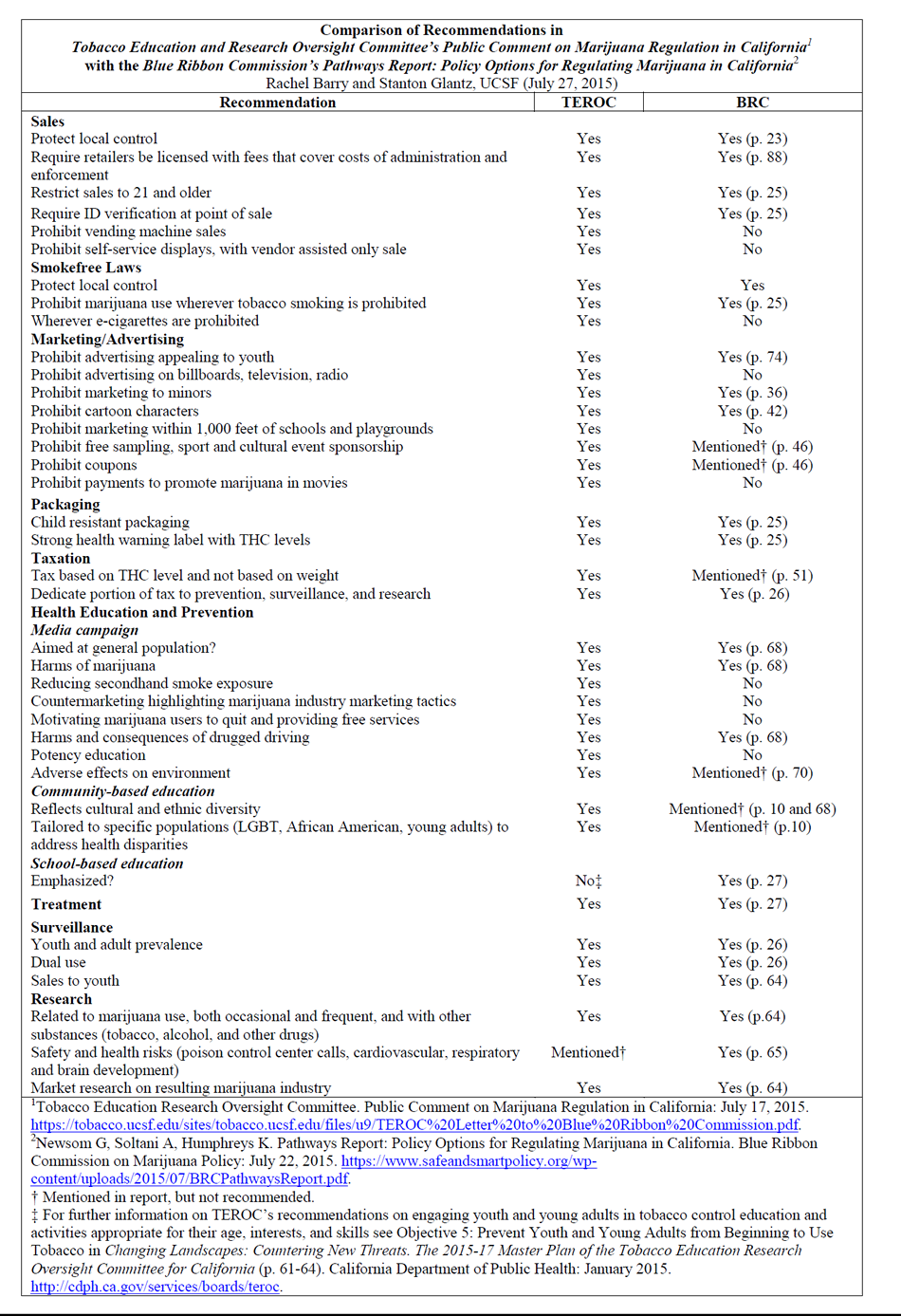Moving the discussion of possible marijuana legalization from a business frame to a public health frame
On July 23, 2015, I posted my first comment on Lt. Governor Gavin Newsom’s Blue Ribbon Commission (BRC) on Marijuana Policy releasing its report “Pathways Report: Policy Options for Regulating Marijuana in California,” (link) with primarily positive critiques. The report addressed important public health issues that in many cases aligned with the Tobacco Education Research Oversight Committee’s (TEROC) recommendations to the Blue Ribbon Commission (which likely were received after the report had been finalized so probably did not influence the report’s language).
Rachel Barry, a member of my research team and I have now completed a side-by-side comparison of the TEROC and BRC recommendations (table below, PDF).
While, as noted before, there is general alignment of the two sets of recommendations, TEROC provides made recommendations on several important public health areas that the BRC report did not address.
These differences likely reflect the different focuses of the two groups, with the BRC seeking options for sensible legalization of marijuana (hence recommendations on things like opening up the banking system to marijuana businesses), while TEROC approached the question from a strong public health perspective.
While the BRC acknowledges the problems that a commercial for-profit market will create and cautions against marijuana becoming a “new California Gold Rush,” its recommendations often fall short of what it will actually take to accomplish this goal, especially in light of the political power than a new legal marijuana industry is likely to accrue almost instantly upon becoming legal.
Shortcomings of the BRC recommendations include weak marketing/advertising restrictions that “protect” commercial speech rights, a media campaign that does not denormalize marijuana use and include anti-industry messaging, and ineffective school-based intervention programs similar to ones that have failed to reduce tobacco use (reference 1, reference 2) and which have been quietly promoted by tobacco companies to displace effective denormalization campaigns.
The discussion is off to a good start, but to deal effectively with the incarceration crisis that the War on Marijuana has created (the ACLU’s original aim when they first talked to me about these issues a year or two ago), it is important that recommendations for any legalization effort be firmly approached from a public health, not a business, frame.
An important issue, not raised in the TEROC letter, is the importance of avoiding complexity in the regulatory environment, because complexity favors big business, with its lawyers and lobbyists. An example of this is whether to treat medical marijuana separately from recreational marijuana. The BRC report discusses different options (without drawing firm conclusions). From a public health perspective a single market (medical and recreational) rather than separate markets would likely be best.
In any event, the unaddressed points in the TEROC letter provide a good beginning for issues that warrant further discussion.
As I have said repeatedly, it is important for public health advocates to participate in this discussion.

